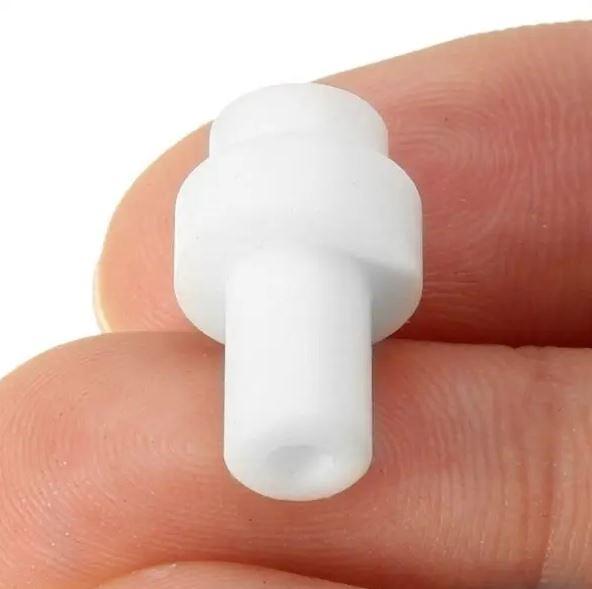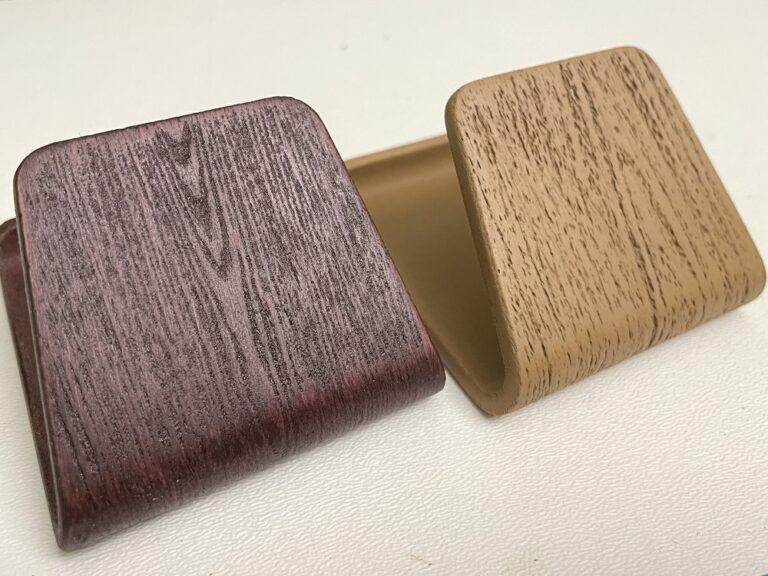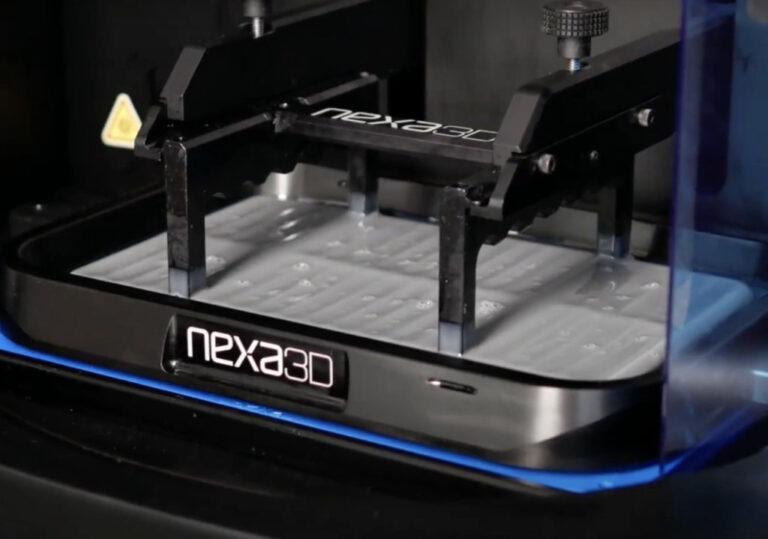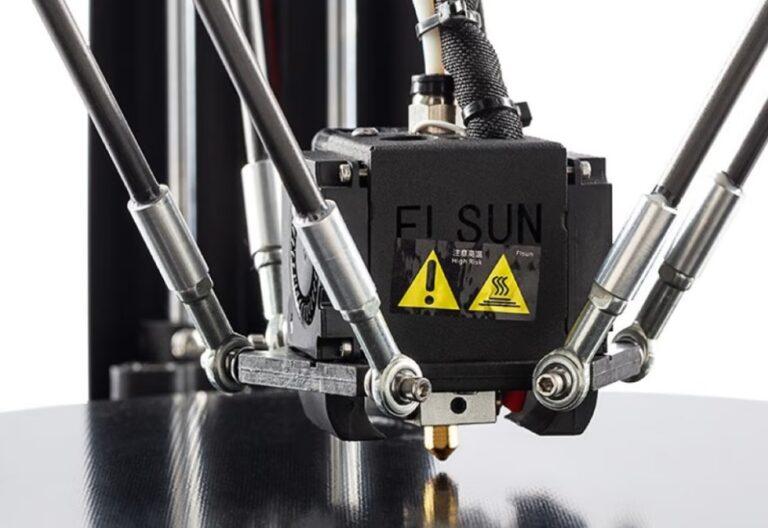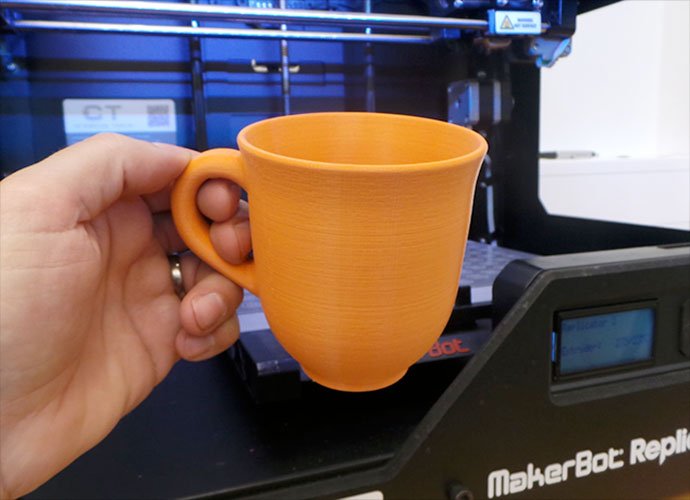Additive Manufacturing Applications: From Aerospace to Medicine
Introduction
Additive manufacturing, often known as 3D printing, is a cutting-edge manufacturing technology that has exploded in popularity in recent years. Additive manufacturing differs from subtractive processes. It can produce intricate patterns by adding material layer by layer. This technology brings many advantages, such as faster lead times, better efficiency, and optimized designs. Additive manufacturing has transformed industries ranging from aerospace to medicine. It has numerous applications in various sectors. This blog article will explore these applications and highlight the benefits of using this technology.

Concept of additive manufacturing and its growing importance in various industries
Additive manufacturing is a new technology that has recently altered the industrial business. Unlike traditional manufacturing extracts material from a large block. Additive manufacturing builds 3D objects layer by layer. This approach offers many benefits over traditional methods. These benefits include shorter production times, less material waste, and more design freedom. As a result, additive manufacturing has become crucial in many industries. Examples include aerospace, automotive, healthcare, and consumer goods. Additive manufacturing is becoming increasingly popular due to its many advantages. The method’s ability to produce complex geometries and customized designs is particularly attractive. The technology’s potential is vast and has yet to be fully realized. As additive manufacturing continues to evolve, it is likely to become an even more valuable tool in various industries.
General overview of the different applications of additive manufacturing
Additive manufacturing has a wide range of applications in various industries. Additive manufacturing finds diverse applications across various industries. In aerospace and defense, they use it to produce intricate components like fuel nozzles and turbine blades. Similarly, the automotive sector utilizes this technology to manufacture engine parts, gears, and brackets. Additive manufacturing is gaining popularity in healthcare and medicine. It is being used to create medical implants, prosthetics, surgical tools, and models for surgical planning.
Architecture and construction professionals use additive manufacturing to produce building components, such as façade elements, walls, and floors. Manufacturers also leverage it to produce customized and unique consumer products, such as jewelry, fashion accessories, and furniture. Additionally, educational and research institutions use additive manufacturing to produce prototypes, models, and other educational tools. The food industry also benefits from this technology by producing customized and complex food designs. Additive manufacturing creates complex and customized parts for industrial equipment and machinery in industrial manufacturing. It produces sculptures, art installations, and other artistic and design objects in art and design. Additive manufacturing produces components for energy production and storage. Wind turbine blades and solar panels are manufactured using additive manufacturing. The energy sector uses additive manufacturing for production and storage.
Aerospace and Defense Industry
Additive manufacturing is popular in the aerospace and military industries because it can create complex and lightweight parts. By using this technology, aviation and spacecraft makers can decrease the weight of their products while maintaining strength. Additive manufacturing is used to produce fuel nozzles, turbine blades, and structural brackets. It also allows the creation of intricate designs that were previously difficult to achieve with traditional manufacturing methods. This technology has reduced costs and lead times while improving the performance and fuel efficiency of aerospace and defense products. Additive manufacturing aids in maintaining and repairing older airplanes. Replacement parts that were previously unavailable are now possible to produce.
Additive manufacturing application in the Aerospace and Defense Industry
Additive manufacturing changed the aerospace and military industries. It can produce high-performance and lightweight components crucial to airplanes and spacecraft. The AM processes like powder bed fusion and direct energy deposition can create fuel nozzles, turbine blades, and structural brackets. These methods can produce components in less time than traditional manufacturing processes. The components still maintain their structural integrity and performance. Additive manufacturing also enables the creation of complicated geometries, which can increase the efficiency and safety of airplanes and spacecraft. Additive manufacturing uses only necessary materials, which reduces waste and environmental impact. This makes it a game changer for the aerospace and military industries. The technology has the potential to revolutionize aircraft and spacecraft component design and manufacturing.
fuel nozzles
Additive manufacturing has shown to be an excellent method for producing fuel nozzles used in aerospace and the military. Fuel nozzles are delicate components that must be designed and manufactured with extreme precision and accuracy. Powder bed fusion and direct energy deposition are additive manufacturing processes. They can build fuel nozzles with intricate channels and forms, which regular production methods cannot construct. By using additive manufacturing to build gasoline nozzles, manufacturers can cut production time and costs while maintaining or enhancing component quality. Additive printing also allows for the creation of bespoke gasoline nozzles that match specific performance criteria. This would not be achievable with traditional manufacturing processes. Overall, additive manufacturing has expanded the fabrication of high-quality fuel nozzles for the aerospace and military industries.
GE Aviation makes aircraft engines and uses additive manufacturing to produce fuel nozzles for the latest LEAP engine. The fuel nozzles enhance fuel efficiency and lower emissions through precise control of fuel spray patterns. Traditional manufacturing methods cannot produce the complex internal geometry of the nozzles needed for the LEAP engine. GE Aviation uses additive manufacturing to produce nozzles. They create the nozzles as a single part. The part has over 20 injection holes. The injection holes are as small as human hair.
GE Aviation reduced fuel system parts from 20 to 1 by using additive manufacturing for fuel nozzles. This resulted in lower weight, fewer assembly steps, and improved fuel efficiency. Additive manufacturing enabled GE Aviation to develop more efficient and environmentally friendly jet engines.
turbine blades
In the aerospace and military industries, additive manufacturing is increasingly being utilized to build complicated components such as turbine blades. GE Aviation used additive manufacturing to create fuel nozzles and turbine blades for the LEAP engine. The LEAP engine requires precisely designed turbine blades that can endure high temperatures and strains during operation. Standard manufacturing processes cannot create complicated forms and interior geometries required for these blades. Additive manufacturing overcomes these limitations. The use of additive manufacturing resulted in a 30% weight reduction in the turbine blades. This reduction led to fuel savings and improved engine performance. GE Aviation’s success in making turbine blades through additive manufacturing highlights its enormous potential in the aerospace and military industries.
structural brackets
Structural brackets are an important component of aircraft and spacecraft design because they provide stability and support to numerous components. Additive manufacturing has transformed the fabrication of structural brackets, enabling previously unachievable complex and personalized designs. Additive manufacturing creates high-strength brackets for aircraft. The brackets use materials like titanium and aluminum alloys. The brackets are lightweight and can resist severe conditions. Boeing uses additive manufacturing for the 787 Dreamliner. The brackets are up to 50% lighter than traditionally built ones. This weight reduction equates to fuel savings and increased efficiency, making additive manufacturing an appealing choice for aircraft makers.
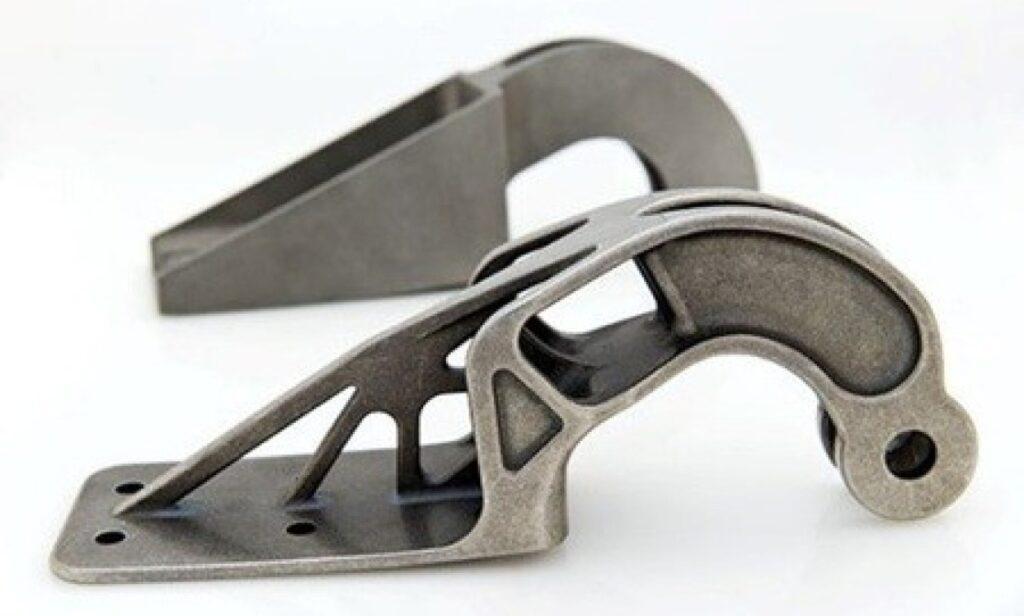

Benefits of using additive manufacturing in aerospace
The aerospace sector has recognized additive manufacturing as a game changer, with significant advantages over traditional production processes. Additive manufacturing saves costs by eliminating costly tooling and reducing material waste. It allows the creation of complex geometries and customized parts. This leads to fewer assembly processes and increased efficiency. This results in quicker production times and shorter part lead times, reducing downtime and enhancing productivity. Additive printing makes lightweight, high-strength components, boosting fuel economy and reducing emissions. This feature makes it an eco-friendly alternative. Aircraft companies are turning to additive manufacturing to stay competitive and innovate. The aviation industry is highly competitive.
Automotive Industry
In the automobile business, additive manufacturing has found several uses. Automotive firms can use 3D printing to create complex and custom parts faster, reducing time and cost. Parts can be built on demand for a flexible manufacturing process that meets individual customer needs. Additive manufacturing produces lighter and stronger components, improving fuel efficiency and performance. The automobile sector can streamline its production process and manufacture more efficient and sustainable vehicles by using additive manufacturing.
Additive manufacturing application in Automotive Industry
Additive manufacturing, sometimes known as 3D printing, has transformed the way the car industry manufactures components. Automakers can make complex shapes with additive manufacturing, unlike traditional methods. Volkswagen used it to make a gearshift knob that is 75% lighter than the previous one, resulting in improved fuel economy. BMW made engine parts like cooling ducts and front-end carriers with it, resulting in cost savings and efficiency. Additive manufacturing is crucial in the auto industry because it can make parts on demand and with more design freedom.
Engine Components
Additive manufacturing is revolutionizing the production of engine parts in the automotive industry. Traditional methods involve a series of complex machining processes, which are time-consuming and costly. However, additive manufacturing allows for greater efficiency and cost-effectiveness in producing engine parts. For instance, Ford has utilized additive manufacturing to produce high-performance cylinder heads for its Mustang Shelby GT500. By using 3D printing, they were able to reduce the weight of the cylinder heads by over 3kg while also increasing the overall durability and performance of the engine. This resulted in a more fuel-efficient and powerful vehicle overall.
Gears
Manufacturers are using additive manufacturing to produce gears for automotive applications. Porsche, for example, created a 3D-printed drive pinion for an electric drive system that reduced weight and increased efficiency. They produced the pinion using a selective laser melting process, which enabled the creation of complex geometries that traditional manufacturing methods cannot achieve.
Brackets
Manufacturers are using additive manufacturing to produce brackets for automotive applications. Bugatti, for instance, utilized 3D printing to produce a brake caliper that is lighter and more rigid than its traditional counterparts. They produced the caliper with titanium powder and a selective laser melting process. This allowed for a complex geometry that is not achievable using traditional manufacturing methods.
Benefits of using additive manufacturing in automotive
In the automobile business, additive manufacturing offers various advantages, including shorter lead times and better efficient designs. Automotive firms use 3D printing for rapid prototyping, speeding up product development. Additive printing allows for complex geometries that can’t be made through traditional manufacturing. This leads to more innovative designs and improved functionality. Additive manufacturing also reduces waste by only using the necessary materials. It also provides the opportunity to produce customized parts on demand. This flexibility in production can improve supply chain efficiency and reduce costs. This can result in more optimized designs, lower weight, more efficient components, and, ultimately, improved performance and fuel economy. Additive manufacturing is vital in the automobile industry. It enhances products and processes. It also reduces costs and lead times.
Healthcare and Medicine Industry
Additive manufacturing has transformed the healthcare and medical industries by enabling the fabrication of personalized medical equipment, prostheses, and implants. The technique enables the production of patient-specific devices that fit the patient’s anatomy, leading to better therapeutic results. Companies also use additive manufacturing to make surgical models and instruments, which can reduce surgical risks. Medical practitioners can use 3D printing for detailed replicas of patients’ organs or tissues. This allows them to rehearse surgeries beforehand. AM in healthcare helps to cut costs, enhance patient outcomes, and speed up innovation.
Additive manufacturing application in Healthcare and Medicine Industry
Additive manufacturing transformed the healthcare and medicine industries. It enables the fabrication of medical implants, prosthetics, surgical equipment, and surgical planning models. The accuracy and personalization of these products are unparalleled.3D printing technology creates orthopedic implants like hip and knee replacements tailored to the patient’s anatomy. Additive manufacturing produces tailored prostheses for amputees, increasing their quality of life. It builds surgical instruments with complicated geometries for precise and minimally invasive surgeries. Additionally, 3D-printed organ, bone, and body component models help with surgery planning, minimizing risks, and improving patient outcomes.
medical implants
Additive manufacturing produces customized medical implants matching a patient’s unique anatomical requirements. Dentists use it to produce dental implants that precisely match the patient’s jaw structure. Orthopedists use it to produce patient-specific implants for joint replacements, such as hip and knee replacements. Cranial implants for patients who have undergone skull surgery or suffered trauma can also be produced using additive manufacturing. Additionally, additive manufacturing can customize hearing aid shells to fit the unique shape of a patient’s ear. These examples demonstrate how additive manufacturing can improve patient outcomes by providing customized and precise medical solutions.
prosthetics
Additive manufacturing is a major changer in prosthetics manufacture, giving various benefits over traditional approaches. It enables, for example, the creation of personalized and complicated geometries that may be adjusted to the unique demands of individual patients. Additive manufacturing also allows for the creation of lighter-weight, stronger, and better-fitting prostheses. “Project Daniel” initiative printed prosthetic limbs for Sudanese children with 3D printing. The “Not Impossible Labs” initiative produced affordable prosthetic limbs with additive manufacturing for US amputees. These are real-world examples of using additive manufacturing in prosthetic production.
surgical tools
Materialise in Belgium and Anatomics in Australia use additive manufacturing to produce surgical tools with complex geometries. These tools are difficult or impossible to make with traditional manufacturing methods. They customize surgical cutting guides and patient-specific surgical instruments using this technology. The tools, such as bone cutters and reamers, are made to fit precisely with each patient’s unique anatomy. This level of customization allows for more accurate and efficient surgeries, reducing the risk of complications and improving patient outcomes.
Benefits of using additive manufacturing in medicine
The medical business has seen a considerable revolution because of additive manufacturing, which has many advantages over conventional manufacturing processes. Additive manufacturing allows for personalized implants and prosthetics for better patient outcomes. Surgical tools with complex geometries improve accuracy and patient outcomes. This method also saves time, resources, and money for medical facilities and patients. Healthcare benefits greatly from additive manufacturing’s cost-effectiveness and improved care.
Architecture and Construction Industry
The field of architecture and building has also embraced additive manufacturing. It is employed to create structural elements for buildings, including walls, floors, and façade features. With additive manufacturing, architects and designers are now able to produce more intricate shapes and designs that were previously impractical. Also, the technique makes it possible to build structures with less material waste and greater sustainability. The creation of massive 3D-printed constructions, such as bridges and homes, is one example of additive manufacturing in the construction sector.
Additive manufacturing application in Architecture and Construction Industry
Building components are produced via additive manufacturing, sometimes referred to as 3D printing, in the architectural and construction sector. The use of 3D printing to produce facade components with complicated shapes, patterns, and textures is one illustration of this. Another illustration would be the creation of flooring and walls, which could be printed in parts and put together on-site. The use of additive manufacturing gives architects and designers more creative freedom and enables extensive customization. In addition, it has the possibility to generate complicated geometries that could be challenging or impossible to create using conventional manufacturing techniques, as well as cheaper prices and less waste.
3D-printed concrete bridge
The 3D-printed concrete bridge in the Netherlands is a significant illustration of additive manufacturing in architecture and construction. The Eindhoven University of Technology created the bridge using a specific concrete mixture printed by a robotic arm. It was able to create a distinctive and complicated design using 3D printing technology that would have been challenging or impossible to do using conventional construction techniques. Also, the printing procedure greatly cut down on the trash produced during construction and shortened the project’s overall timeline. The success of this project has raised interest in using additive manufacturing to produce complicated, long-lasting structures in the construction sector.
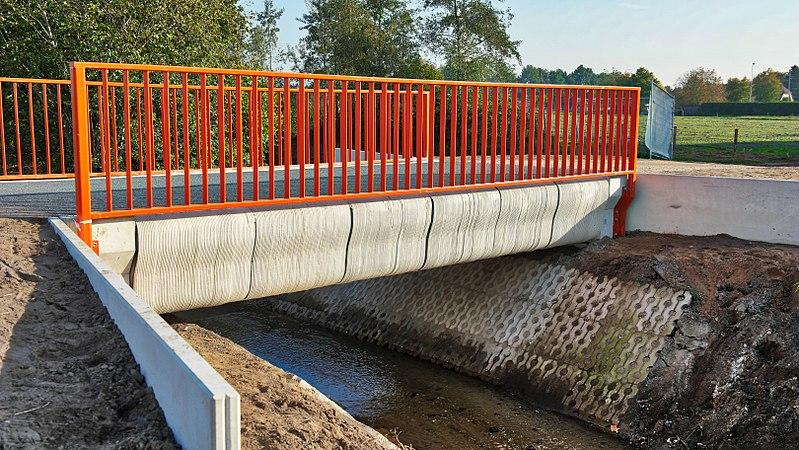

3D-printed concrete houses
A Chinese business by the name of Winsun has created a 3D printing technology that can create complete houses out of concrete. A massive 3D printer produces large concrete parts, which are then assembled on-site to construct an entire house. Because it can cut down on waste and construction time while simultaneously lowering costs, this technology has the potential to transform the construction sector.
One real-world example of 3D-printed concrete houses is the “TECLA” project. TECLA is a sustainable housing model that was 3D printed using a mixture of local soil and natural materials. The project was a collaboration between Italian design studio Mario Cucinella Architects and 3D printing company WASP. The TECLA homes are designed to be fully sustainable and are built using a circular approach to construction. The 3D printing process allowed for the creation of complex shapes and structures that would be difficult to achieve using traditional construction methods. Italy built the first prototype of the TECLA house in 2020, and they plan to expand the project to other locations in the future.


3D-printed steel bridge
The MX3D Bridge is a 3D-printed steel bridge located in Amsterdam, Netherlands. A robot programmed to print steel layers created the bridge’s structure using MX3D technology. This technology can potentially transform the construction of bridges and large structures by allowing the production of intricate designs, which traditional manufacturing methods find difficult to achieve.
Benefits of using additive manufacturing in architecture and construction
There are many advantages of additive manufacturing, especially 3D printing, for the building and construction sector. The capacity to produce components using only the necessary amount of materials, hence reducing the amount of building waste, is one significant benefit. Additionally, because it enables architects and engineers to produce complex shapes and ideas that would be challenging or impossible to realize using conventional manufacturing techniques, additive manufacturing promotes increased design flexibility. Also, it offers the chance to alter and personalize construction elements, which can increase client pleasure. Additive manufacturing can drastically shorten construction time and increase the effectiveness of the building process overall. This lowers costs and boosts production.
Consumer Products Industry
One important area where additive manufacturing is used is in the consumer goods business. Technologies for additive manufacturing enable businesses to develop new items and enhance the form and performance of already-existing ones. 3D printing can employ additive manufacturing in producing consumer goods, ranging from specialized items to widely-used products. The method can create unique and customized things like jewelry, phone covers, and eyewear. Additionally, it is useful for manufacturing replacement components for broken or damaged items. The design and production of consumer goods are undergoing ongoing change, and additive printing has the potential to transform both processes, fostering more product innovation and customer happiness.
Additive manufacturing applications in Consumer Products Industry
The ability to produce individualized and distinctive products at a reasonable price has changed the consumer goods market thanks to additive manufacturing. Designers and manufacturers may build sophisticated and complicated designs that would be hard to construct using conventional production techniques with the aid of 3D printing technology. Jewelry, accessories, and furniture are just a few examples of consumer goods that are frequently made using additive manufacturing. Designers may produce complicated, one-of-a-kind designs that are simple to adapt to customers’ desires by employing 3D printing. Additive manufacturing is a desirable alternative for producers aiming to create distinctive, one-of-a-kind consumer goods because it also speeds up production timelines and lowers material waste.
jewelry
The jewelry industry is using additive manufacturing to create unique and intricate designs that traditional manufacturing techniques would find difficult or impossible to achieve. One example is the use of direct metal laser sintering (DMLS) to produce customized engagement rings and wedding bands. With DMLS, a high-powered laser fuses together small particles of metal to create a 3D object layer by layer. This allows for intricate designs with fine details and textures to be created. Another example is the use of stereolithography (SLA) to produce intricate and delicate jewelry pieces. SLA uses a laser to cure a liquid resin, layer by layer, creating a solid object. This technique is ideal for producing jewelry with intricate shapes and thin walls.
One real-world example of additive manufacturing in the jewelry industry is the production of Direct Metal Laser Sintering (DMLS) printed rings. DMLS is a form of 3D printing that uses a high-powered laser to fuse the metal powder together layer by layer to create complex and detailed designs. This process allows for the production of intricate designs that may be difficult or impossible to produce through traditional manufacturing methods. One company that uses DMLS to produce jewelry is the Australian brand “Luminaire,” which specializes in custom-made, 3D-printed jewelry, including rings made from titanium, stainless steel, and other metals. DMLS also offers the benefits of reduced material waste and increased design flexibility, allowing for the creation of unique and personalized pieces.
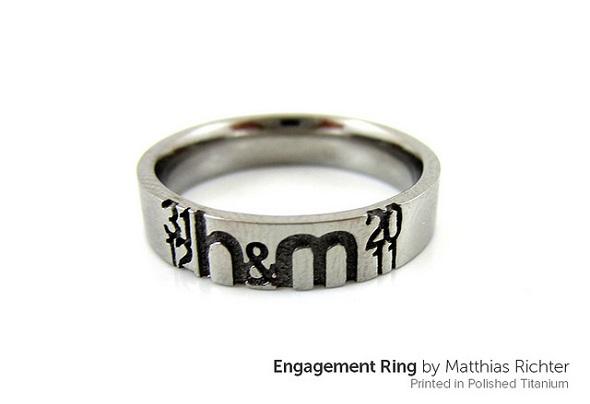

fashion accessories
The fashion industry is increasingly using additive manufacturing to create items like jewelry, purses, and shoes. For instance, the 3D-printed jewelry company Nervous System employs computer algorithms to build complicated and one-of-a-kind designs that are not possible to produce using conventional manufacturing techniques. Adidas is another firm that employs 3D printing to produce the midsoles for their Futurecraft 4D sneakers. By cutting down on waste and resource utilization, the technology enables greater customization and personalization as well as more environmentally friendly production methods.
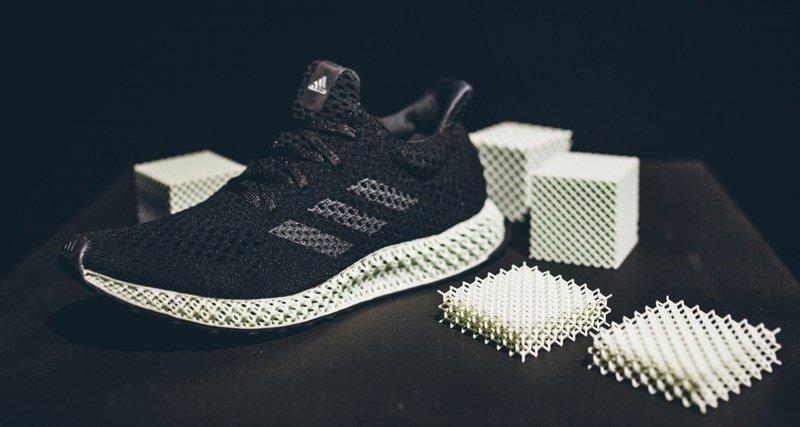

Benefits of using additive manufacturing in consumer products
The consumer products business has benefited greatly from additive manufacturing, notably in terms of design freedom and personalization. Designers and manufacturers may now generate sophisticated and complicated shapes that would have been challenging or impossible to make using conventional production techniques. Additive printing offers the benefit of creating personalized items, tailored to the needs and preferences of each customer, such as bespoke clothing and personalized jewelry. In addition to giving customers more choice and control over the things they buy, this also enables businesses to foster deeper brand loyalty and boost customer happiness.
Education and Research Industry
Additive manufacturing is transforming research and education. It produces instructional models and prototypes to aid in comprehending complex theories and concepts. AM creates unique laboratory tools and equipment that can be customized to specific research needs. It produces intricate scientific models and structures, enabling detailed analysis of complex systems and phenomena. Additive manufacturing has opened new avenues for investigation and discovery.
Additive manufacturing application in education and research
Also, the field of education and research has adopted additive manufacturing as a crucial instrument. Prototypes, models, and other teaching aids are created using it. In order to better grasp and study diverse concepts, students, and researchers can build precise and comprehensive models of intricate systems and components. In addition, additive manufacturing offers a quick and affordable way to make prototypes for study and experimentation. Engineering students, for instance, can make prototypes of their concepts using 3D printers and test them out before moving on to the manufacturing stage. For surgery planning and training, researchers in the medical sector can produce models of various body sections and organs. Due to its adaptability and versatility, additive manufacturing is a crucial tool in the education and research sectors.
produce prototypes and models
Researchers and educators frequently use additive manufacturing to swiftly and accurately build prototypes and models. Universities and research facilities, for instance, employ 3D printing to produce prototypes of novel items for testing and evaluation. Before investing in pricey manufacturing procedures, engineers in the automotive sector can utilize 3D printing to develop prototypes of new vehicle parts to make sure they fit and perform as planned. In the medical industry, professionals can use 3D printing to produce models of organs or other structures for planning and training procedures. This technology enables the production of complex and accurate prototypes faster and more affordably than conventional techniques.
educational tools
Additive manufacturing has revolutionized the way educational tools are produced. 3D printing allows educators to produce prototypes, models, and other educational tools that were once impossible to create. For example, anatomy students can use 3D-printed models of organs to learn about their functions and structures, while engineering students can print scale models of bridges and buildings to learn about their construction. Additionally, additive manufacturing can be used to produce tactile learning aids for students with disabilities, such as braille maps and models. In this way, additive manufacturing has expanded the possibilities for hands-on learning and improved accessibility in education.
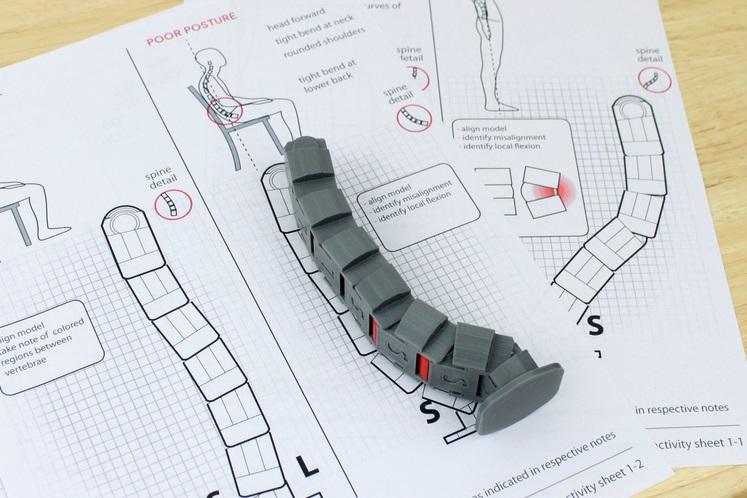

Benefits of using additive manufacturing in education and research
The field of education and research has undergone a transformation thanks to additive manufacturing, which now provides a variety of advantages not previously accessible. Students and researchers can become familiar with complex ideas and concepts firsthand by creating prototypes, models, and other teaching materials quickly and easily. A further benefit of additive manufacturing is that it offers a practical means of producing specialized tools and equipment, increasing resource accessibility. Moreover, 3D printing makes it feasible to build complex structures and designs that would be challenging or impossible to make with conventional manufacturing techniques, improving the learning process overall. All things considered, the use of additive manufacturing in research and education has the potential to revolutionize how we approach teaching and learning.
Food Industry
The food sector is investigating additive manufacturing, often known as 3D printing, in order to develop novel and personalized food products. In the food sector, additive manufacturing involves employing edible materials like cheese, chocolate, and dough to create intricate forms and designs that are challenging to obtain with conventional food manufacturing techniques. The potential of additive manufacturing in the food sector to provide individualized and distinctive items that can satisfy specific consumer preferences is one of its key advantages.
For instance, businesses like Nestle have employed additive manufacturing to create customized chocolates with distinctive flavors and designs. By lowering waste and the requirement for assembly and packaging, additive manufacturing can also increase the effectiveness and speed of food production. Adopting additive manufacturing in the food sector faces obstacles, including the need to guarantee food safety and preserve the flavor, texture, and nutritional content of the end product. Yet, additive manufacturing has enormous potential in the food sector and has the ability to change how we perceive food production and consumption in the future.
Additive manufacturing applications in the food industry
Additive manufacturing is an emerging technology that has been making strides in the food industry. It is used to create customized and intricate designs for chocolates and other confectioneries. By using additive manufacturing, food manufacturers can create complex shapes and designs that were previously impossible to produce with traditional methods. The process starts by creating a 3D design of the food product using computer-aided design software. The 3D printer uploads the design and prints the food product layer by layer. The food industry uses additive manufacturing to create personalized chocolates with customized messages or logos, and even intricate designs that are impossible to produce by hand. This technology is helping to create more unique and visually appealing food products, which can help businesses stand out in a crowded market.
Additive manufacturing has many real-world applications for creating unique and intricate food designs. 3D Systems is a business that developed a 3D printer specifically for making chocolate and sweets. The printer uses Selective Laser Sintering (SLS) to melt and shape the chocolate into complex patterns and forms. Another illustration is the business Natural Machines, which has created a 3D food printer that can produce a range of tailored forms and designs using food pastes manufactured from natural ingredients like fruits, vegetables, and grains. A few upscale restaurants have also started adopting 3D printing technology to design aesthetically appealing and distinctive food presentations, like elaborate sugar sculptures and edible decorations.
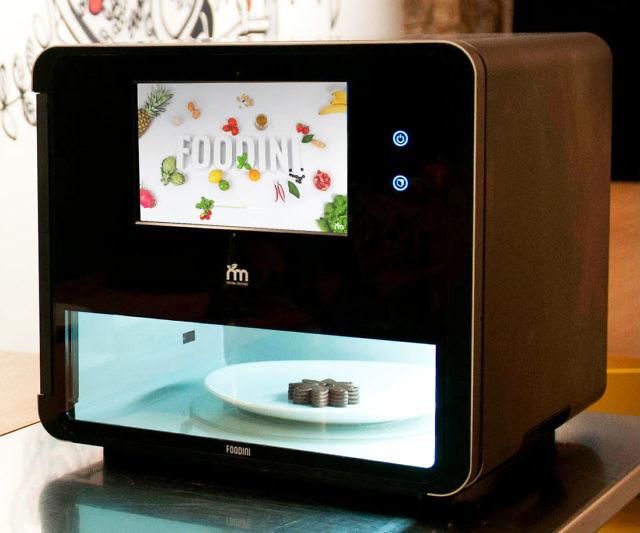

Benefits of using additive manufacturing in the food industry
The food business is now in a new era of possibilities because of additive manufacturing. Customized and sophisticated culinary patterns that were previously difficult to make by hand are now possible thanks to technology. This has given chefs and food producers more creative flexibility and enabled the creation of distinctive and avant-garde culinary products. In addition, additive manufacturing can use culinary ingredients like chocolate, sugar, and dough to create intricate shapes. Additive manufacturing can enhance the overall sensory experience and make food more visually appealing. In general, additive manufacturing has transformed the food business by opening up new avenues for producing elaborate and personalized food designs, leading to more innovative and aesthetically attractive culinary creations.
Industrial Manufacturing Industry
The industrial manufacturing sector involves the use of mechanical, chemical, and physical processes to produce goods and products. Due to its many advantages, such as cost savings, improved efficiency, and design flexibility, additive manufacturing is being used more and more in this business. The use of additive manufacturing by manufacturers allows for the quicker, more accurate, and waste-free production of complicated components and parts. Furthermore, additive printing enables customization and the development of distinctive designs that were previously not achievable with conventional production techniques. Significant developments in industries including aerospace, automotive, and healthcare have resulted from the application of additive manufacturing in the industrial manufacturing sector, as well as the creation of novel materials and goods.
Additive manufacturing applications in Industrial Manufacturing Industry
The ability to produce intricate and specialized parts for machinery and equipment thanks to additive manufacturing, often known as 3D printing, has transformed the industrial manufacturing sector. The additive manufacturing process may precisely and effectively produce the intended part layer by layer by using computer-aided design (CAD) software to create a 3D model of the desired part. This enables the production of parts that would be challenging or impossible to make using conventional manufacturing techniques, as well as more complex designs. Due to the adaptability of additive manufacturing, it is also possible to produce single parts in small numbers on demand, which lowers lead times and inventory costs. A variety of materials, including as metals, polymers, and ceramics, can be used in additive manufacturing to make objects with particular characteristics and functionalities. This has made the industrial manufacturing sector more receptive to innovation and optimization.
Additive manufacturing is also useful in industrial manufacturing for creating assembly-line fixtures and tools that match the precise requirements of a given product, making the assembly procedure more efficient and precise. Furthermore, additive printing makes it possible to produce intricate geometries and interior features that are either impractical or impossible to produce using conventional manufacturing techniques. This level of accuracy and personalization can lead to higher-quality products with lower manufacturing costs. Moreover, rapid prototyping and design iteration is made possible by additive manufacturing, which speeds up product development and time to market. Overall, the industrial manufacturing sector could undergo a revolution thanks to additive manufacturing, which would increase productivity and market competition.
injection molding
The use of 3D printing to create injection molding molds is one practical illustration of additive manufacturing applications in the manufacturing sector. The injection molding manufacturing process frequently produces plastic parts in large quantities. Companies use expensive and time-consuming machinery to fabricate molds from metal. However, 3D printing can produce molds in a shorter amount of time and for less money. Through the quick and simple creation of custom molds by manufacturers, production timelines and prices may ultimately be sped up. Companies like Stratasys and HP have created 3D printers expressly for employing additive manufacturing to create injection molding molds.
Benefits of using additive manufacturing in industrial manufacturing
Because of its many advantages, additive manufacturing has been widely used in industrial manufacturing. The shortest lead time is one of the most important advantages. Compared to traditional manufacturing techniques, additive manufacturing allows for the production of parts and components in a matter of hours or days as opposed to weeks or months. Moreover, the flexibility and adaptability of designs can be increased using additive manufacturing, which increases production effectiveness. This is because of the technology’s ability to produce elaborate designs and complicated geometries, which are sometimes impractical or impossible to produce using conventional manufacturing techniques. Moreover, additive manufacturing can result in significant cost reductions because it minimizes material waste and does not require pricey fixtures and equipment. In general, the advantages of adopting additive manufacturing in industrial manufacturing make it a desirable choice for businesses seeking to optimize their production processes and increase their bottom line.
Art and Design Industry
The field of art and design has undergone a revolution thanks to additive manufacturing, which has made it feasible for creators to produce elaborate and complicated designs that were previously unattainable using conventional production methods. With the use of additive manufacturing, artists may easily produce unique sculptures, jewelry, and other types of artwork. The technology allows for more creative design freedom and encourages experimentation by artists with cutting-edge concepts. Designers are better able to envision their ideas and make more informed judgments during the design process when they have the ability to produce highly realistic models and prototypes. For artists and designers, additive manufacturing has created new possibilities by enabling them to produce distinctive and customized items more cheaply and precisely.
Additive manufacturing applications in Art and Design Industry
Sculptures, installations, and other creative and design objects are produced using additive manufacturing more and more in the art and design sector. With the use of technology, designers, and artists can now produce detailed and complicated creations that would have been impossible to make using more conventional techniques. Artists and designers can experiment with various materials and forms using additive manufacturing to produce one-of-a-kind items that are customized to their particular requirements and preferences. In addition, this technology makes it possible to create highly customized, one-of-a-kind items more quickly and at a cheaper cost than using conventional manufacturing techniques.
sculptures
While not widely used in the traditional art industry, additive manufacturing has made its way into the creation of sculptures and installations. One illustration is the work of Australian artist Joshua Harker, who uses selective laser sintering to produce elaborate 3D-printed sculptures. Themes from mythology, anatomy, and spirituality are all explored in his writing. Neri Oxman, a different artist, is well-recognized for her 3D-printed sculptures that are inspired by nature. Her “Gemini” series, for instance, consists of intricate, interlocking structures that resemble natural forms. These artists are employing additive manufacturing to produce elaborate, one-of-a-kind pieces that push the limits of what is possible in the art world.
art installations
People are increasingly using additive manufacturing to create complex and sophisticated art installations that would have been difficult or impossible to make using conventional techniques. For example, David Benjamin and The Living used 3D-printed molds to create 10,000 bricks made of a unique mycelium-based substance to construct the “Hy-Fi” installation for the Young Architects Program at the Museum of Modern Art. Nervous System used 3D printing to create the “Light Cycles” installation. The installation comprises thousands of interlocking plastic pieces that respond to the movements of people passing through it, creating a dynamic and interactive structure. With the use of additive manufacturing, artists may build distinctive installations that defy convention and broaden our conception of what is possible. These examples show how additive manufacturing can be utilized to push the frontiers of what is possible in art.
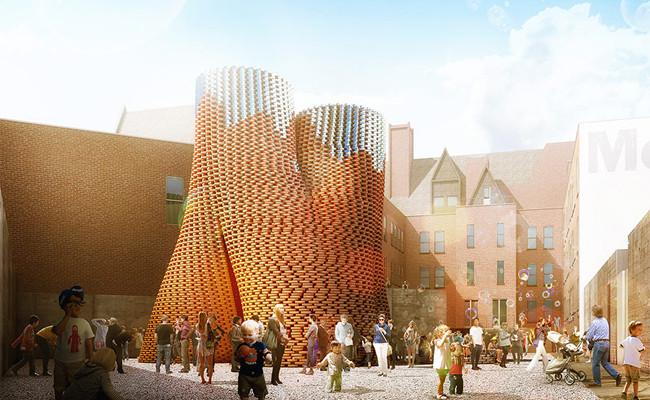

Benefits of using additive manufacturing in art and design
With several advantages that were previously not attainable with conventional production techniques, additive manufacturing has created new possibilities in art and design. More design flexibility is one of the main benefits, as additive manufacturing makes it feasible to produce detailed and complicated designs that would be challenging or impossible to produce using traditional methods. Moreover, additive manufacturing is a more effective and economical way of production that enables designers and artists to produce their creations with less waste and more speedily. Finally, because custom and personalized designs may be produced via additive manufacturing, designers and artists are able to produce one-of-a-kind items that express their distinct inventiveness and sense of style.
Energy Industry
For the production of essential components, the energy sector has adopted additive manufacturing more frequently in recent years. Components for the energy sector, including heat exchangers and gas turbine blades, are produced using additive manufacturing processes. In the energy sector, additive manufacturing is used to increase component durability, decrease component weight and cost, and increase system efficiency. The creation of models for testing and validating new technologies, including wind turbines and solar panels, is another way that the energy sector uses 3D printing. The energy sector is able to experiment with novel designs and materials thanks to additive manufacturing, which results in more effective and affordable energy systems.
How additive manufacturing is used to produce components for energy production and storage
In order to produce parts for energy generation and storage, additive manufacturing has grown in popularity in the energy sector. Turbine blades for the wind energy industry can be 3D printed utilizing materials like carbon fiber or polymers combined with glass fiber, enabling more intricate designs and higher efficiency. Moreover, solar panel components like frames and mounting systems as well as energy storage devices like batteries and fuel cells can be produced via additive manufacturing. Additive manufacturing is a viable answer for the energy business since it can manufacture unique designs with less waste and energy use.
Siemens Gamesa Renewable Energy uses 3D printing to produce parts for its wind turbines, including blade molds, base frames, and housings. The company claims that this process reduces lead times by up to 90% and that the parts produced are more accurate and have better performance.
General Electric (GE) uses 3D printing to produce fuel nozzles for its advanced gas turbines, which are used to generate electricity. The company claims that this process reduces the number of parts required from 18 to just one and that it results in better fuel efficiency, lower emissions, and lower maintenance costs.
Australian company Titomic uses additive manufacturing to produce large-scale titanium structures, including storage tanks and pressure vessels for the oil and gas industry. The company claims that this process is faster, cheaper, and more environmentally friendly than traditional manufacturing methods and that the resulting structures are stronger and more durable.
Benefits of using additive manufacturing in the energy industry
The energy sector can gain from additive manufacturing in a number of ways, including improved energy efficiency and decreased waste. The energy sector may design and create parts that are more effective, lighter, and stronger by utilizing additive manufacturing processes to make energy components like solar panels and wind turbine blades. This can lead to considerable increases in energy output and a decrease in the industry’s total environmental effect. By making items with greater precision and using less extra material, additive manufacturing can also cut down on waste. This may result in economic savings and a more environmentally friendly method of producing energy. Overall, thanks to new and creative techniques to design and build energy components, additive manufacturing has the potential to revolutionize the energy sector.
Conclusion
In conclusion, additive manufacturing is a rapidly developing technology that has transformed how we design, make, and use things in a variety of industries. It has many advantages, such as shorter lead times, more design flexibility, higher customization, better product performance, and less waste. By employing additive manufacturing, businesses can create intricate geometries, use less material, and improve designs, which leads to considerable cost savings and improved productivity. With the ability to restructure entire industries, additive manufacturing is revolutionizing the way we think about and build goods in a variety of fields, from healthcare and automotive to architecture and energy. We may anticipate seeing even more intriguing applications and developments in the future as technology continues to develop and become more widely available.
10 main points of the post
- Additive manufacturing, also known as 3D printing, has revolutionized various industries by allowing for efficient and cost-effective production of complex components and structures.
- The aerospace industry benefits from additive manufacturing through reduced costs and increased efficiency in manufacturing processes.
- The automotive industry uses additive manufacturing to produce components such as engine parts, gears, and brackets.
- In the healthcare industry, additive manufacturing is used to produce medical implants, prosthetics, surgical tools, and models for surgical planning.
- The architecture and construction industry utilizes additive manufacturing to produce building components such as facade elements, walls, and floors.
- The consumer products industry uses additive manufacturing to produce fashion accessories and customized designs.
- Education and research industry benefits from additive manufacturing by producing prototypes, models, and other educational tools for enhanced learning experiences.
- The art and design industry uses additive manufacturing to produce sculptures and art installations.
- The energy industry uses additive manufacturing to produce components for energy production and storage such as wind turbine blades and solar panels.
- The benefits of using additive manufacturing across all industries include reduced costs, increased efficiency, reduced waste, enhanced design flexibility, and improved product quality.
The importance of exploring different additive manufacturing applications
The potential for additive manufacturing to change a wide range of sectors, including the automobile, aerospace, healthcare, and construction, is astounding. To realize even greater benefits as technology develops and advances, it is crucial to investigate all possible uses for additive manufacturing. Industry can adopt additive manufacturing to cut costs, boost productivity, and create more individualized and creative designs. Complex geometries and bespoke goods are now possible, giving designers and engineers new ways to make things that were before unattainable. Additive manufacturing is also a viable choice for sectors aiming to become more sustainable because it has the ability to reduce waste and environmental impact. It will be fascinating to observe how different industries are transformed and new inventions are made possible as additive manufacturing continues to advance.
The potential of additive manufacturing to revolutionize various industries and improve the quality of life for people
Due to its novel approaches to solving the problems associated with conventional manufacturing, additive manufacturing has the potential to transform a number of industries. The use of additive manufacturing has created new opportunities for product design, customization, and production efficiency across industries, including consumer goods, healthcare, and aerospace. The use of additive manufacturing has the potential to improve energy efficiency and lessen environmental impact by enabling the creation of complicated shapes and minimizing material waste. The increased design flexibility and personalization made possible by additive manufacturing also improve the quality of the final product and the user experience. The future of manufacturing and the improvement of living standards for people all over the world are predicted to be significantly influenced by additive manufacturing as a result of ongoing research and development.
FAQs
Additive manufacturing, also known as 3D printing, is a process of creating physical objects by layering materials on top of each other based on a digital model.
Additive manufacturing has applications in a wide range of industries, including healthcare, automotive, architecture and construction, consumer products, education and research, art and design, and energy.
Some benefits of using additive manufacturing include reduced lead time, increased design flexibility, improved patient outcomes, reduced costs, reduced waste, and more personalized and innovative designs.
Some real-world examples of additive manufacturing applications include 3D printed medical implants and surgical tools, 3D printed automotive components, 3D printed building components, and 3D printed fashion accessories and art installations.

